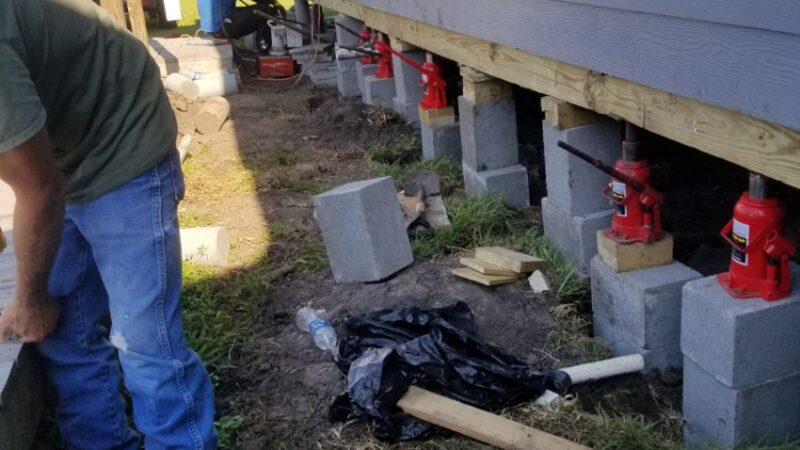But there is at least one more reason why a pier and beam foundation is usually preferred to a slab-on-grade or basement foundation, particularly in a location that is prone to flooding. The reason is that, in case of damage, a pier and beam foundation would be easier to repair and strengthen with concrete piers.
Furthermore, strength and stability are two important characteristics of a foundation, considering that the weight of the entire home rests on it. Therefore, taking all measures necessary to keep the foundation intact and in position throughout the years is imperative to ensure your home’s structural integrity.
However, adverse weather conditions and events, such as heavy rainfall, flooding, drought, freezing temperatures, shifting soil, soil subsidence, sinkholes, and earthquakes could cause your pier and beam foundation to sink, shift out of its level position, and settle unevenly. Regardless of the underlying cause(s) of damage, installing concrete piers delivers one of the most affordable, effective, and durable foundation repair methods for a pier and beam foundation. That’s because when experienced professionals use concrete piers to fix a foundation, the entire structure will be sturdier and more stable and durable than before the repair.
How Concrete Piers Add Stability to a Home’s Foundation
To install concrete piers, a number of holes must be drilled underneath your home to a depth that ensures that the bottom of each pier will be anchored in bedrock or other types of stable stratum. After all the holes are drilled, a hydraulic press will be used to push the piers into the ground as far as they will go, which is typically referred to as a “point of refusal.”
Then, the workers will use a series of hydraulic jacks hooked up to a unified hydraulic jacking machine in order to lift the home to its proper elevation. Once the home is lifted, each pier will be shimmed off with either steel or concrete shims to fill the gap between the top of the pier and the foundation.
The number of piers required to repair a pier and beam foundation depends on the type, location, and extent of the damage. Because the concrete piers will be placed at specific intervals apart, as specified on the structural plan, your home will be strongly and evenly supported across the entire footprint area. The result is that the entire structure is more stable, which will reduce the likelihood of future foundation problems.
What Sets Concrete Piers Apart?
When it comes to restoring a pier and beam foundation to its original position and strength, concrete piers bring along some unique features, which indicate why these types of piers can benefit your home and its problematic foundation. These are:
- Durability – Unlike masonry piers, which are subject to mortar deterioration and difficulty with repairs once they start tilting, and steel piers, which tend to rust when exposed to the moisture and water in the soil, concrete piers are more durable. Because a concrete pier is a monolithic structure, meaning it’s one solid piece that’s also steel-reinforced on the inside, it has a remarkably high tolerance to compressive, compressive, and bending forces. Even though concrete is a porous material that absorbs water, you can keep your concrete piers and foundation structurally sound by simply ensuring proper drainage around your home.
- Versatility – Whether your foundation has settled or heaved, or your home needs to be lifted, concrete piers of different types of sizes can be used to complete your foundation repair or home elevation project. For a perfectly level home, the height of concrete piers can also be adjusted slightly by adding or removing shims.
- Stability – Concrete piers provide a popular and trusted method of repair that has been used for a long time. Because they’re able to stabilize foundations permanently, once you repair your foundation with concrete piers, you can rest assured knowing that you won’t need additional repairs any time soon. It’s also important to note that concrete piers are the best foundation repair option in damp climates. Since these piers keep homes away from excessive evaporation, they can alleviate a series of potential problems, including water buildup, which could put a lot of pressure on the entire structure and cause extensive structural damage.
Whether you intend to repair your foundation or elevate your living space above the BFE, opting for concrete piers could save your home, increase its value, and prevent future foundation problems. To learn more about the foundation repair and elevation solutions, our specialists provide for the homes located in the Houston-Galveston area, contact Allied Foundation today!

